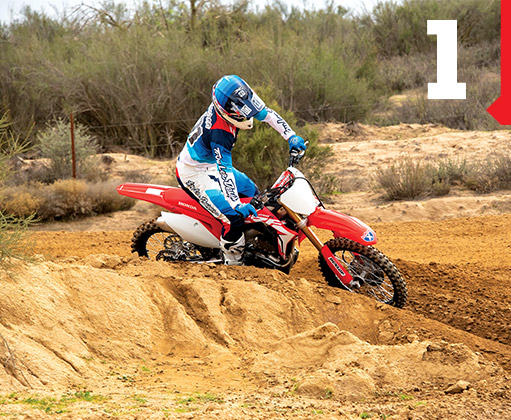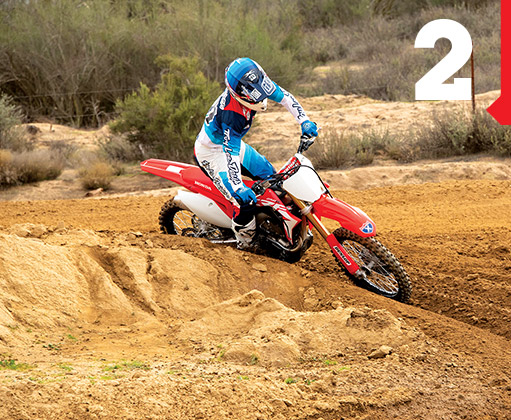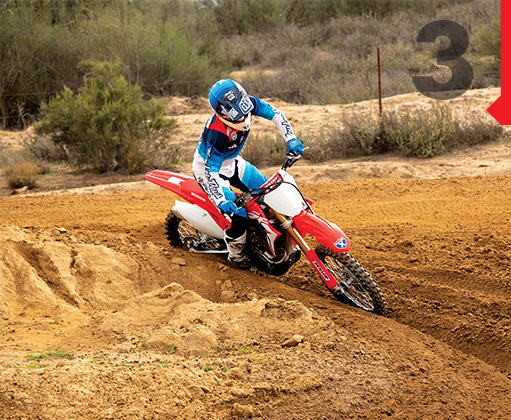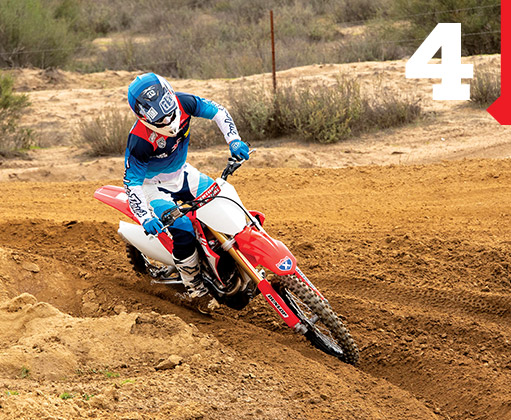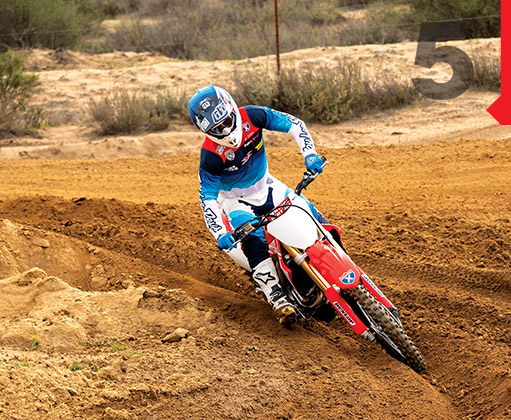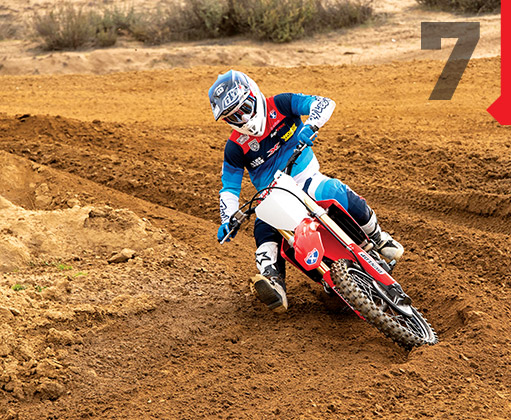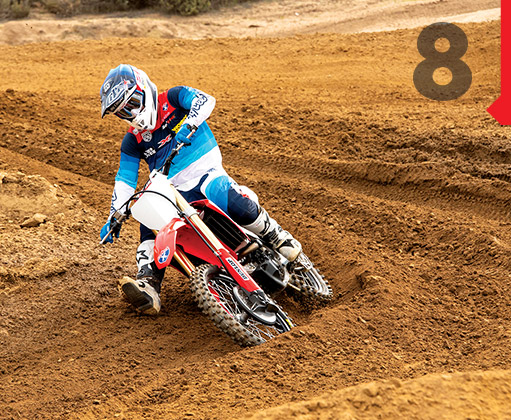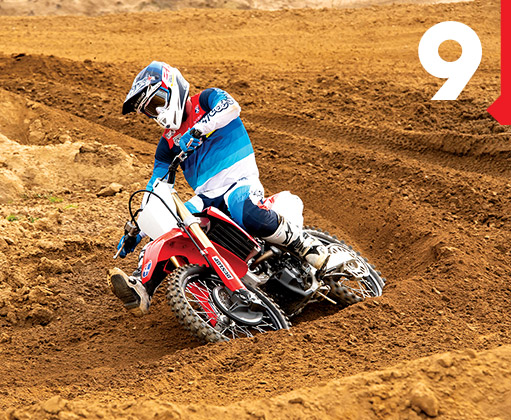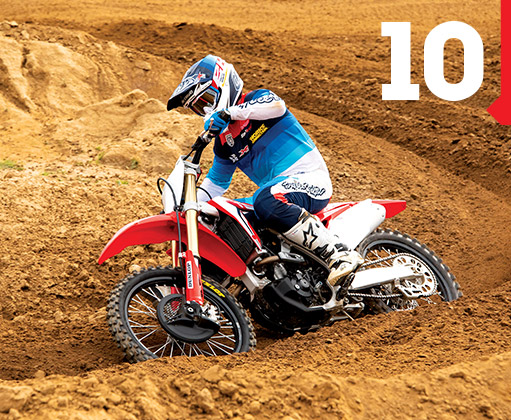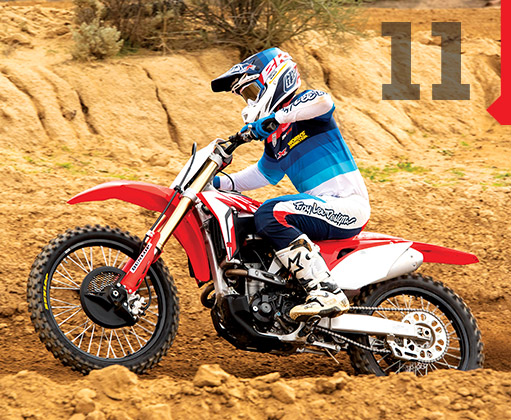


PHOTOS: SIMON CUDBY


PHOTOS: SIMON CUDBY

ump for show, corner for dough . . . right? Well, that’s what we thought when we chose this sequence for our first Motocross 101 segment. This new feature will show various motocross and off-road sections and narrate the most technically correct way to negotiate them.
For this installment, we shot a technical right-hander that dropped down in elevation and had a decreasing radius. It was tricky because once you commit to sitting down and putting your leg out, you don’t have use of your rear brake.
 Generally speaking, always try to enter a turn from the outside of the previous straight. That opens the turn up and allows you to carry more momentum in and through the corner. You can see I’m on the brakes, looking where I want to go and engaging the clutch slightly to keep from stalling. Don’t pull the clutch all the way in—the engine brake is your most consistent means of slowing, and it keeps your front end planted.
Generally speaking, always try to enter a turn from the outside of the previous straight. That opens the turn up and allows you to carry more momentum in and through the corner. You can see I’m on the brakes, looking where I want to go and engaging the clutch slightly to keep from stalling. Don’t pull the clutch all the way in—the engine brake is your most consistent means of slowing, and it keeps your front end planted.
 You’ll notice in this image that my foot is plowing through the dirt on the inside. This is another reason to stay standing until you reach the actual apex of the turn. When standing, you have better control of the bike through bumps and ruts, and you also have use of the rear brake.
You’ll notice in this image that my foot is plowing through the dirt on the inside. This is another reason to stay standing until you reach the actual apex of the turn. When standing, you have better control of the bike through bumps and ruts, and you also have use of the rear brake.
 Here you see me beginning to address the apex of the turn. I’m bringing my weight forward and starting to lift my foot off the brake.
Here you see me beginning to address the apex of the turn. I’m bringing my weight forward and starting to lift my foot off the brake.
 In this shot I’ve reached the apex, or the point in the turn where the primary change of direction happens. As I reach the apex I sit into the pocket, get my foot out in front of me, begin accelerating, and lean into the turn. This all needs to happen as smoothly and seamlessly as possible to keep from upsetting the chassis. It’s at this point that you should be looking forward out of the turn as well.
In this shot I’ve reached the apex, or the point in the turn where the primary change of direction happens. As I reach the apex I sit into the pocket, get my foot out in front of me, begin accelerating, and lean into the turn. This all needs to happen as smoothly and seamlessly as possible to keep from upsetting the chassis. It’s at this point that you should be looking forward out of the turn as well.
 Body position should be like you see: The crack of your butt should be on the outside edge of your seat. Head forward, eyes looking ahead (I should be looking forward more), and your outside knee pressing into the bike to assist with turning and stability.
Body position should be like you see: The crack of your butt should be on the outside edge of your seat. Head forward, eyes looking ahead (I should be looking forward more), and your outside knee pressing into the bike to assist with turning and stability.
 From here it’s all about accelerating, looking ahead, and getting yourself into a good position for the next corner or section.
From here it’s all about accelerating, looking ahead, and getting yourself into a good position for the next corner or section. ![]()
